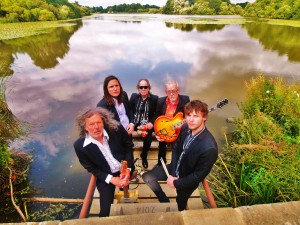-
Featured News
Patti Smith Upcoming Tour for 50th Anniversary of Horses
 By Harvey Kubernik
“Horses was like the first cannon blast in a war – frightening and disorienting. I mean, she was so unlike the FM radio terrain in every way. She was literate, aggress
By Harvey Kubernik
“Horses was like the first cannon blast in a war – frightening and disorienting. I mean, she was so unlike the FM radio terrain in every way. She was literate, aggress -
Featured Articles
Chasing the White Light: Lou Reed, the Telepathic Secretary and Metal Machine Music
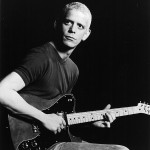 By David Holzer
Fifty years ago, Lou Reed released Transformer. In among “Walk on the Wild Side,” “Make Up” and “Vicious,” cuts that would launch a cartoon Rock N Roll Animal pers
By David Holzer
Fifty years ago, Lou Reed released Transformer. In among “Walk on the Wild Side,” “Make Up” and “Vicious,” cuts that would launch a cartoon Rock N Roll Animal pers -
ORIGINAL SOUNDTRACKS – Bali High / Crystal Voyager / Morning of the Earth (Anthology) CDs/LPs

Although all three of these releases are of a piece in that they were soundtracks to surf movies, leave your expectations behind. Forget the hot rods, Fender Jaguars and girls, girls, girls—the amped-up excitement of what most of us consider “surfing tunes” has no place on the other side of the world. Instead, these connect with the stonier, more cosmic side of the lifestyle that one would find in a place like Bali rather than Santa Monica (well, early-’60s Santa Monica, at least). In fact, the mystical pull of Bali plays a strong role throughout and, although the work of a single musician, the sprawling Bali High is the most frenetic and disjointed of the trio. Recorded by Hawaiian virtuoso Michael Sena, this epic double LP release was filmmaker Stephen Spaulding’s attempt to recreate the vibe of the unlicensed music of his ‘60s and ‘70s heroes that he used to cut the original film. Sena effortlessly reproduces the feel of Santana, the Stones, Marley and more, but with an early-’80s production that puts his guitar somewhere on the slightly more soulless Satriani/Zappa axis, with a slick fusion production. It’s diverse—and admirable—enough to merit a first listen, but doesn’t hold up as anything you’d want to return to.
The other two reissues are more of a piece, utilizing a consistent host of Australian rock and country artists. G Wayne Thomas, who only released one album under his own name in 1973, made his first appearance on 1972’s Morning Of The Earth soundtrack, giving an appropriately we-are-all-the-universe feel to the title track. Several other one-hit (or no-hit) wonders offer up singer-songwriter tracks that amble on pleasantly enough, but don’t justify the label hype of “psychedelic” music (with the rare exception being prog outfit Tamam Shud’s floaty and brilliant “Bali Waters,” which sounds like an outtake from Islands-era King Crimson).
Thomas handles all the songwriting chores on 1973’s Crystal Voyager, which is the most cohesive of the set. Given two full sides, he finds the stoned soul of the classic Eastern Hemisphere surf trip, leading a band that’s able to develop a buoyant, country rock/soft-sike stride and makes the LP feel like more of an actual album than a soundtrack. (Alex Stimmel)
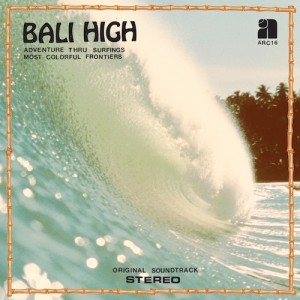
An Interview with Jimmy Walker of the Knickerbockers
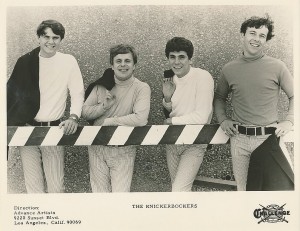
By Katy Levy
So, if you don’t mind, let’s go back right at the beginning… You are originally from the East Coast, is it true that you were born in the Bronx?
This is true! I’m from New York.
How was it like when you grew up?
When I lived in the Bronx, well… growing up there was kind of interesting. It is New York and it is one of the most interesting places on the planet. There’s so much to do and see and I was an avid sports fan so I could go to see the New York Yankees play. I played a lot of sports myself. There were a lot of outlets for that and also for music. I used to go downtown to Manhattan with friends and we’d go to Birdland and other jazz places and watch the really great musicians play. I think that people who come from New York, if they take advantage of it, are around some of the greatest situations in the world, best musicians and artists. Because people from other places, other states, other countries go to New York to act and play, to study music and study writing. So you have the advantage of people coming to your city, bringing their talent with them and you don’t have to travel very much. It’s a melting pot. So, I think that was really cool. I mean, you’ve got great stuff like museums, the Natural History, the New York Public Library on 2nd Avenue. You’ve got the zoo; the best zoo in the world is in the Bronx… the Bronx Zoo. You’ve got all kind of places that you can go and take advantage of for educational purposes and just to broaden your views of the world.
I feel that was the greatest part about growing up in New York… It had its disadvantages. In my neighborhood it started to get tough! There were a lot of gangs started to come up in the late ‘50s. That’s when it was starting to get downright dangerous. That was the disadvantage of being a teenager in a dangerous neighborhood, you really had to watch yourself. But you know, it makes you street smart!
Do you come from a musical background or are you the only artist in the family?
The only person in the family who had any musical ability was my dad, he could sing really well. And he could play the drums, same as me.
Well, actually my next question was about your discovery of the drums, where it came from, what attracted you to that particular instrument. So it came from your dad?
Yeah! I think if you have a talent, at least me at a very early age – I was maybe seven or eight years old – you just naturally gravitate towards it. I watched drummers on television. My uncle was a musicologist and a copyist for the army band at West Point. He bought me my first snare drum and sticks and brushes when I was nine. He was also a kind of saxophone player and even in our first little jam session in my house, my uncle pulled out his saxophone and we started playing old swing stuff. He noticed and said that I had an unusual gift for it. So even at an early age, it was just totally natural for me to be able to play the drums. I couldn’t understand why everybody couldn’t do it!
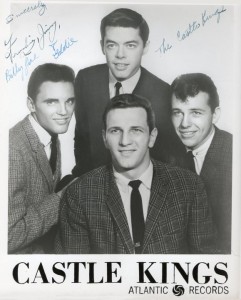
So, before you joined the Knickerbockers, you were in a New York band called the Castle Kings. What sort of music did you play?
Yeah! Well you know, the street doo-wop, rock ’n’ roll, Elvis, Carl Perkins, Jerry Lee Lewis, the Isley Brothers, Little Richard – the early rock ’n’ roll stuff. One late afternoon, we were standing outside in front of Atlantic Records. We just had a meeting with Dot Records, they were in the same building as Atlantic. So we’re standing outside, harmonizing, waiting for one of the guys’ dad to pick us up – this is a true story – harmonizing to some goofy song that one of the guys in the band wrote and Ahmet Ertegun, the president of Atlantic Records, heard us and told us to meet him the next day. So we did! He actually signed us to a contract and we recorded three or four records. I was recording with some of the legends of the business. People like Phil Spector, Ahmet Ertegun and his brother Nesuhi. These guys were legends and we were in the studio with them and I didn’t know who they were! So I mean, at a very early age, we were doing things with the heavyweights of the business and we didn’t even know it.
Apart from being an amazing drummer, you also sing… Is it true you that you joined the Knickerbockers because of that extra talent and why were they looking for a drummer who could sing?
They were looking for a drummer and the first time I saw the Knickerbockers was in a neighborhood venue. It was a supermarket that had been emptied, sold-out and it was reopened to do a little party on Memorial Day. I was walking down the street and I heard this music so I went back and they were set up playing as a trio. Buddy, the saxophone player was playing the drums, really well, and I thought, boy this is a band I’d love to play with! A couple of weeks or months later, they called me up because they’d heard I was a drummer and that I was looking for work. So I went and set up in John and Beau’s house and we played, but my drumming skills were a little bit on the amateur side because I was still young. Then they asked me to sing, I sang some rock ’n’ roll stuff and John and Beau’s mum heard me sing and she said “Hire that guy, he does sound good”! So my skills with drumming didn’t get me the work, it was the singing. Then I improved as a drummer because you get to play a lot. Also, Buddy taught me a lot of stuff on the drums that he got from other good drummers. But it was actually my voice that got me the job.
The Sweet Pretty Things (are in bed now, of course…)
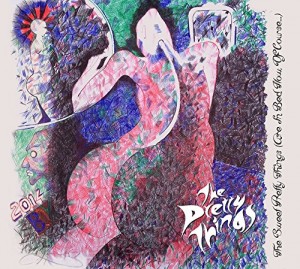
By Mike Stax
In the autumn months of 2014, the future of the Pretty Things hung in the balance. Phil May was in a London hospital having been diagnosed with COPD and emphysema. Doctors warned him that if he didn’t make drastic changes to his lifestyle he’d be dead within a few months.
That was then. This is now. One year later, in the autumn of 2015, Phil has turned his life around and is in fighting form again. Not only is he back onstage and on the road with the Pretty Things, this summer the band released one of the best albums of their more than half-century career. A huge part of this miraculous turnaround is down to the support of his band mates, friends, family, and you Pretty Things fans, many of whom wrote to Phil personally via UT with words of encouragement and support, and some tough love. When I saw Phil in London earlier this year, he told me how moved he was by all of your letters, how he read and re-read them and found sustenance in them. He appreciated how many of you didn’t pull any punches. He quoted one from memory: “Don’t you dare die on us, you fucker, we need you around.” Yes we do.
If you needed another reminder why, look no further than The Sweet Pretty Things (are in bed now, of course…), their new album on Repertoire Records. (The title quotes the opening line of Bob Dylan’s “Tombstone Blues,” a song his Royal Bobness wrote and recorded shortly after the famous 1965 UK tour during which he hung out with members of the Pretty Things.)
The album was recorded quickly and simply, on analogue equipment, using vintage instruments and amps, and with only minimal overdubs. Even some of the lead vocals were cut live along with the basic tracks. The result is a collection of songs that sounds warm, organic, and at times almost effortless. It’s also very much a collaborative effort. All of the band members as well as manager/producer Mark St John contribute to the songwriting, including the two junior members, bass player George Woosey (who co-wrote three songs) and drummer Jack Greenwood, whose skills are showcased on the instrumental jam “Greenwood Tree.”
“The Same Sun,” written by Dick Taylor and Mark St John, opens the album, and in another, kinder era would’ve also been the hit single that preceded it. Taylor’s winding guitar melody, mirrored by the vocals, soon imprints itself into your cranial hard drive, along with a great chorus hook: “The sun / The sun is in the sky / The same sun / But seen through different eyes.” With its strong SF Sorrow vibe, this one has all the makings of a new Pretty Things classic, and has already become a favorite in their live shows.
“And I Do”—written by Woosey, May, and St John—is archetypal modern-day Pretties. Phil spits out the lyrics with a vinegary vehemence on the verses, propelled by a wiry blues guitar riff, giving way to a more resigned tone on the melodic, harmonized choruses. A pair of cover versions follows. First they revisit the Byrds’ “Renaissance Fair,” a staple of their live set in 1968-69, highlighted here by some chiming guitar work by Taylor and Frank Holland, then they ambush with a storming version of the late-period Seeds obscurity, “You Took Me By Surprise.” Phil’s lascivious howl elevates the song tremendously, and the band rocks out with a hard rock ferocity reminiscent of the Harvest-era favorite “Cold Stone.” This is followed by a spirited take on “Turn My Head,” a song first written and recorded in 1967, but passed over for release at the time.
“Dark Days”—written by Phil May and Frankie Holland—is one of the album’s highlights. A tense, foreboding monolith of a song, cloaked in all kinds of doomy atmospherics, it’s underpinned by a dense, menacing riff of the kind Led Zeppelin once specialized in. Phil digs deep, getting right inside the lyrics and conjuring an especially powerful and affecting vocal performance, supported by some strong harmonies, beautiful interweaving guitars and swirling Mellotron.
It’s followed by “Greenwood Tree,” which I mentioned earlier, a psychedelic instrumental jam that had originally segued out of “Renaissance Fair.” Dick and Frankie lay down some searing lead guitar work before it breaks off into an extended drum solo that manages not to overstay its welcome (the whole track clocks in at 4:16). This clears a path for the excellent “Hell, Here and Nowhere,” written by George Woosey, an acoustic-based piece with some wonderful three- and four-part harmonies, harking back to the some of the more mellow tracks on Parachute and Freeway Madness.
“In the Soukh” is also superb, an atmospheric, Eastern-flavored instrumental by Dick Taylor with a great, coiling guitar riff, reverberating Bo Diddley beat drums, and monastic chanting. The overall effect is not unlike the Yardbirds “Hot House of Omagarashid.”
The album closes out with another standout, “Dirty Song,” a dark, sensual, bluesy number with a terrific, insistent guitar riff, and another soulful, immaculately phrased vocal from Phil. Once again the group’s massed, wordless backups add greatly to the overall mood of the number.
Is there another band working today, more than fifty years into their story, still making music this powerful and relevant? No, there isn’t. Only the sweet Pretty Things. Long may they reign. (MS)
